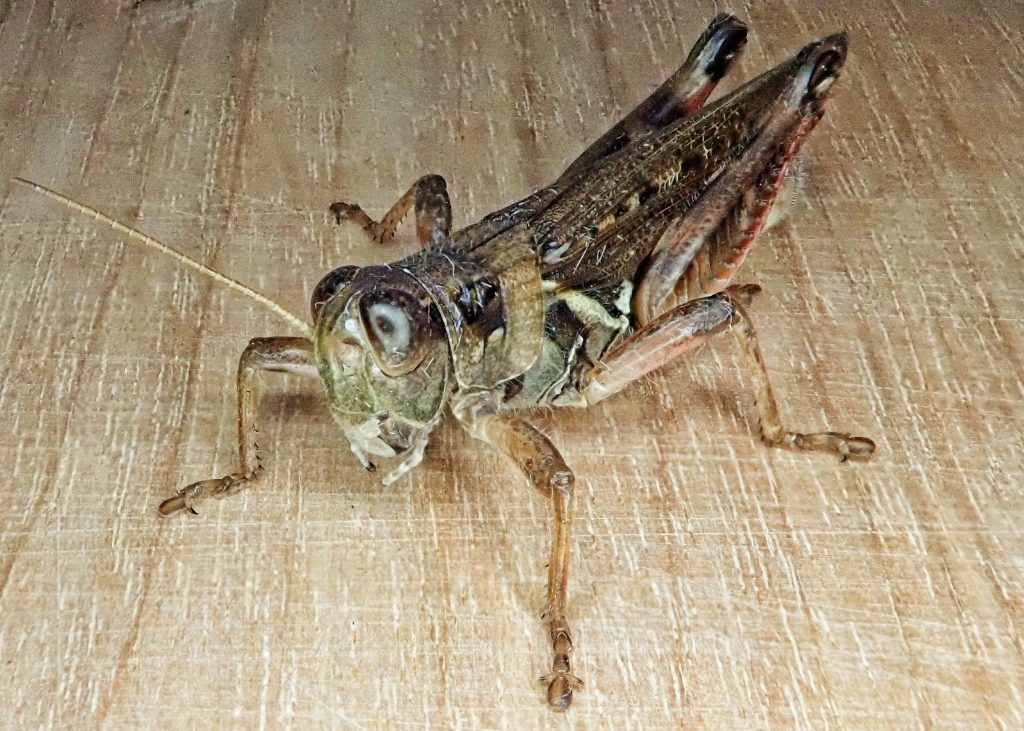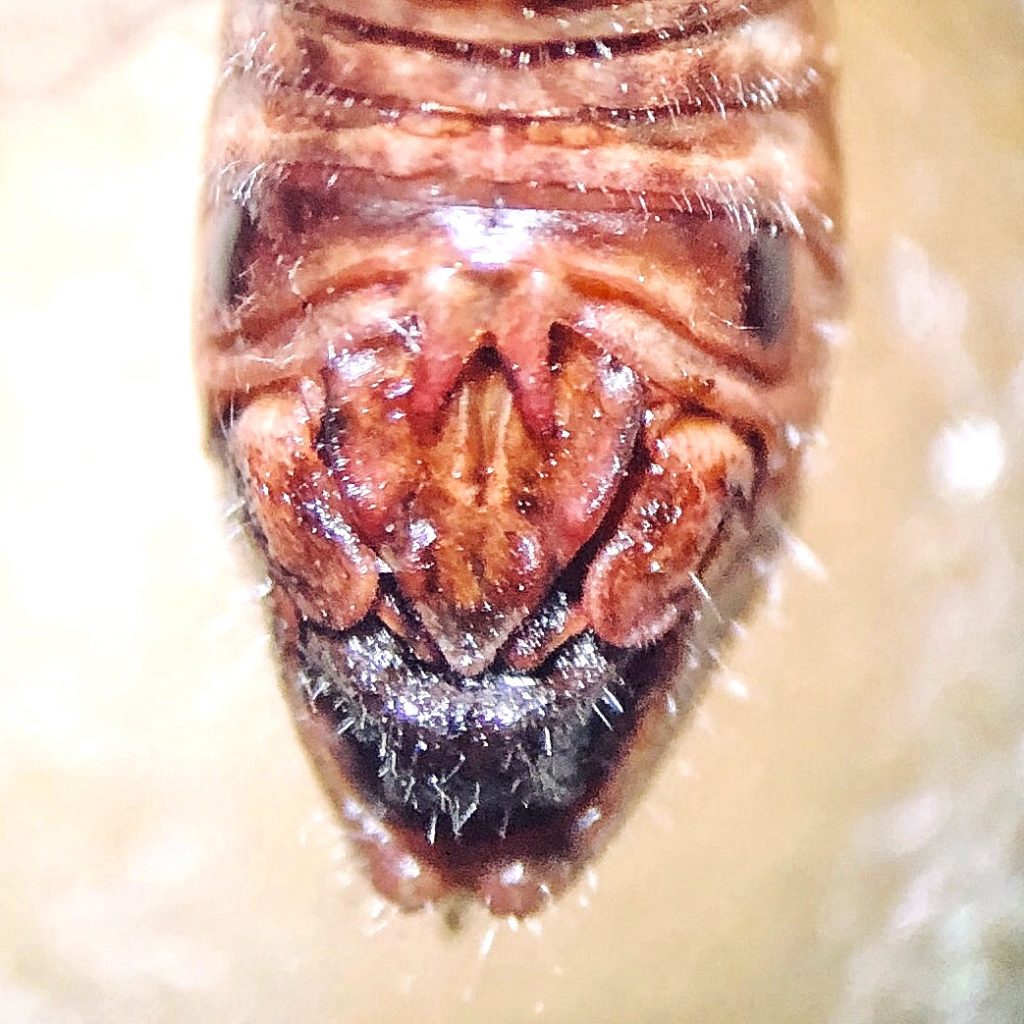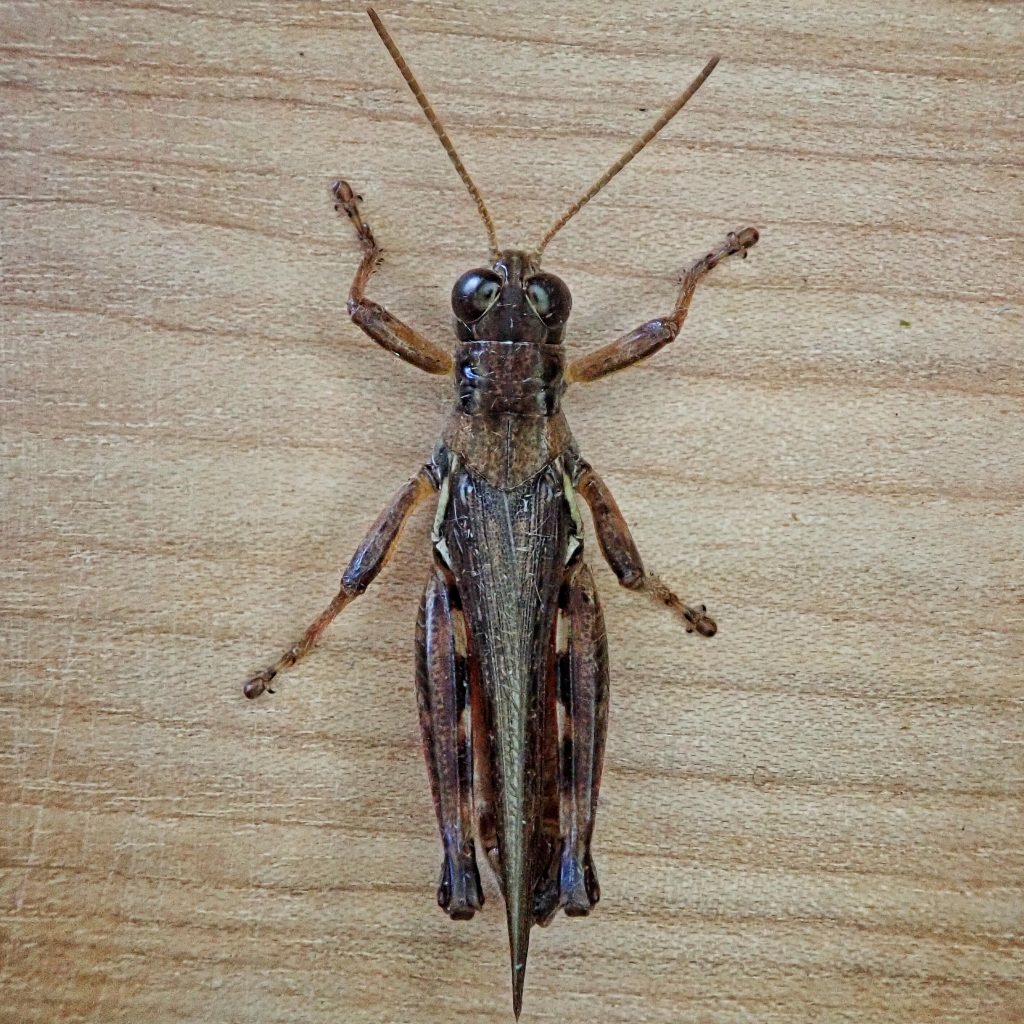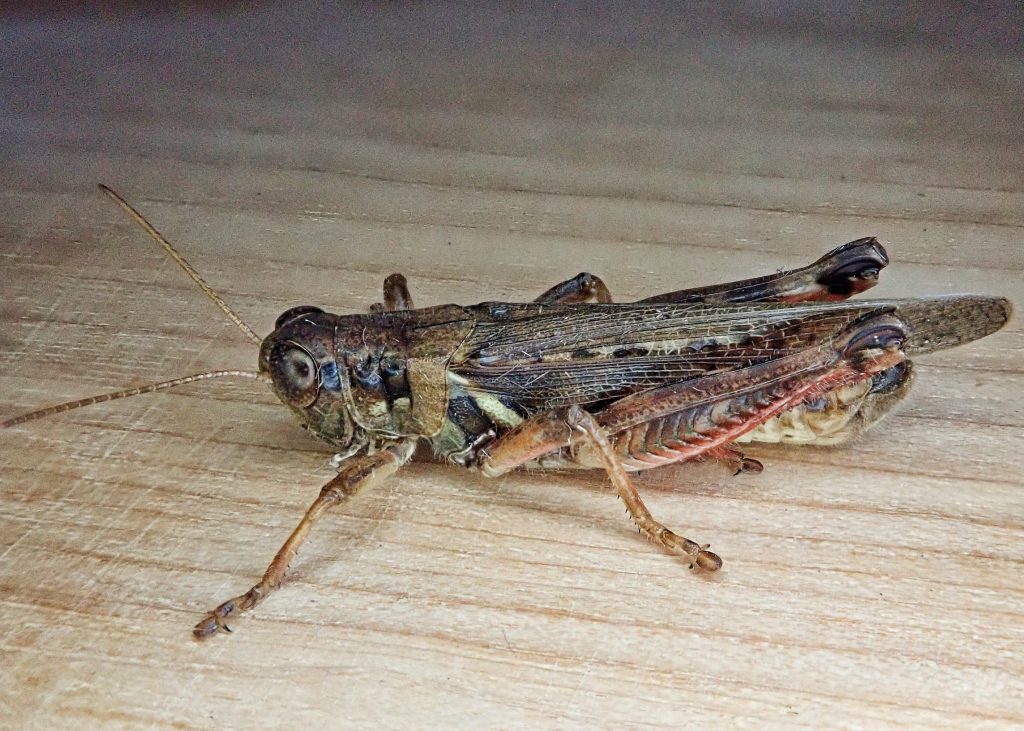
This is a spurthroated grasshopper (Melanoplinae), so called because of a small, but readily visible when in hand, spine between the front legs on the ventral surface. It is a member of the genus Melanoplus, which is represented by over 50 species in North America, of which at least 14 occur in our region. These are very similar species, colored variably by brown, gray, tan, and black blotches, with unpigmented hindwings.
Melanoplus sanguinipes has wings which extend beyond the abdomen, with a central row of dark dots on the forewings, and dark, oblique bands on the hind femora. They can only be positively identified by examining genitalia of males. The most easily accessed trait is the supra-anal plate, which is visible in hand with a hand lens, and is located on the dorsal posterior of the abdomen.

Migratory Grasshoppers can be serious agricultural pests, with concentrations of up to 300 insects per square yard. They eat almost anything green, though they seem to prefer forbs over grasses. On warm days they will migrate with the wind, and can cover 30 miles per day. The eggs overwinter in soil and hatch in the spring. Some members of Chloropidae (frit flies) consume the eggs, especially Goniopsita oophaga. And, besides being susceptible to a variety of pathogens and parasites, almost every insectivorous fish, herp, bird, and small mammal preys heavily upon them. Still, the swarms can be massive, and economic impact for farmers can be extensive.

Migratory Grasshopper | Grasshoppers | Entomology | University of Wyoming
Species Melanoplus sanguinipes – Migratory Grasshopper – BugGuide.Net
Size- Males 19-24mm; females 18-32mm
Habitat- May be found anywhere
Range- Region wide
Eats- all low growing vegetation
Flight Season- Adults are found from mid-summer until first frosts.

Interesting! But you need a content warning. 😏
You didn’t like the grasshopper butt? Well, I did just say that was the easiest way to a positive id 😀